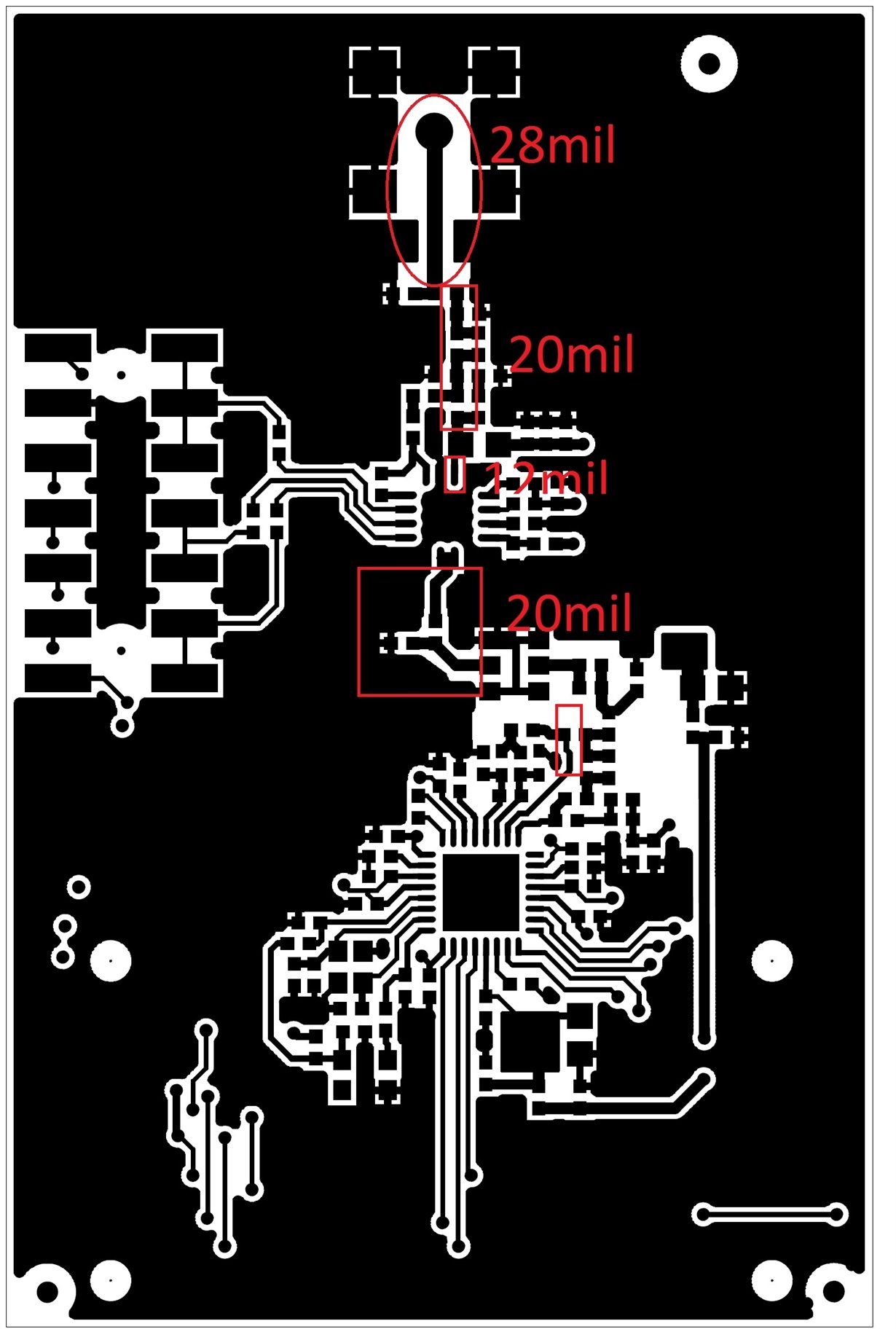Hi,
We are fabricating a RF board based on cc1120+1190 reference design. However, we found out that there are different trace width for the RF path, 28mil, 20mil, 12mil etc, as shown in the attached gerber pic.
Could you share with us what impedance shall we follow? so as to have highest transmit power, and best sensitivity.
Do we need to have impedance control for the entire PCB or just the RF traces?
Appreciate your advice.
Thanks and regards,
Shanguo


